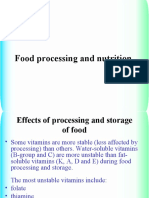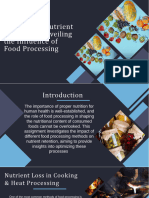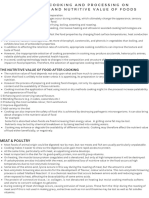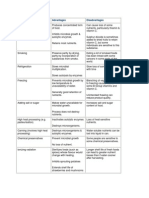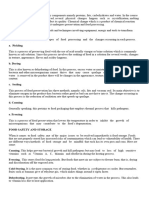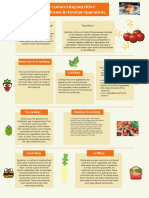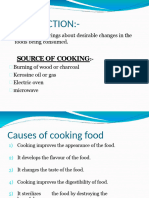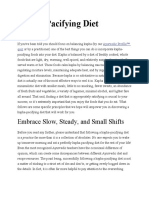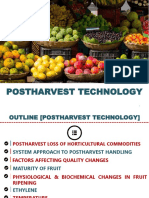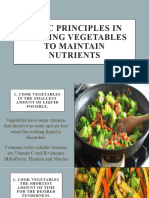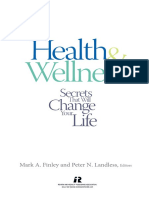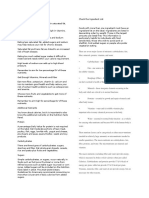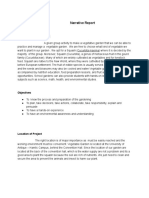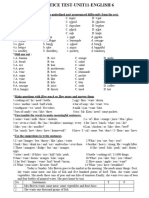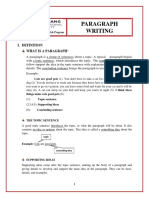0% found this document useful (0 votes)
20 views30 pagesFood Module 4
The document discusses food processing and preservation methods, highlighting their impact on nutrient retention. It outlines various levels of food processing, how different cooking methods can lead to nutrient loss, and strategies to minimize these losses. Additionally, it emphasizes the importance of informed food choices and nutritional labeling for maintaining a healthy diet.
Uploaded by
aishwaryayadavise2022Copyright
© © All Rights Reserved
We take content rights seriously. If you suspect this is your content, claim it here.
Available Formats
Download as PDF, TXT or read online on Scribd
0% found this document useful (0 votes)
20 views30 pagesFood Module 4
The document discusses food processing and preservation methods, highlighting their impact on nutrient retention. It outlines various levels of food processing, how different cooking methods can lead to nutrient loss, and strategies to minimize these losses. Additionally, it emphasizes the importance of informed food choices and nutritional labeling for maintaining a healthy diet.
Uploaded by
aishwaryayadavise2022Copyright
© © All Rights Reserved
We take content rights seriously. If you suspect this is your content, claim it here.
Available Formats
Download as PDF, TXT or read online on Scribd
/ 30






